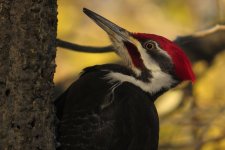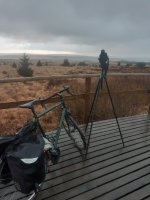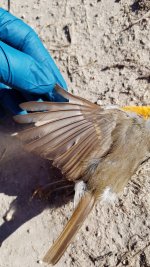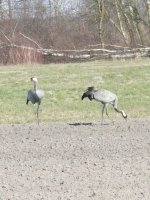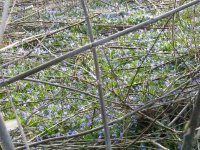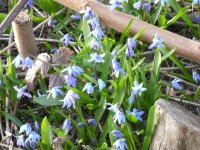
Why don't they lump them like Dark-eyed Juncos?
EDIT: A significant part was edited out.
EDIT 2: The question comes partly from frustration, but I'm also genuinely interested why. I guess this is a situation similar to the Bean Goose complex, but perhaps progressing faster (the paper outlined noticeable changes between the late 1960s and the late 1990s in Western Siberia, for example)? Or is it because people are used to viewing them as different species, much like the Redpoll complex?
I also wonder whether that the bar for ticking a Yellowhammer in Western Europe is very low (certain introgression of Pine Bunting genes is admissible--as with the presence of a chestnut moustache--which would all perhaps make sense given that there reportedly is evidence of ancient hybridisation between these two species*) compared to the bar for ticking a Pine Bunting (only phenotypically pure individuals make the cut) stems from some proven assymetry in gene flow between the two species, or is it just a quirk of European listing, and a phenotypically slightly impure** Pine Bunting would be readily ticked as such in Northeastern Asia the way a phenotypically slightly impure** Yellowhammer is embraced as such here?
* I recall reading about gene flow between Gadwalls and Falcated Ducks which happened at some point in the distant past, and Gadwalls showing certain limited traits of Falcated Ducks aren't treated as hybrids, I think.
** I tentatively refer to phenotypes No. 1 ('citrinella') and 4 ('leucocephalos') from the said paper: https://www.researchgate.net/public...bunting_in_Russia_Dutch_Birding_2003_25_17-31.
EDIT: A significant part was edited out.
EDIT 2: The question comes partly from frustration, but I'm also genuinely interested why. I guess this is a situation similar to the Bean Goose complex, but perhaps progressing faster (the paper outlined noticeable changes between the late 1960s and the late 1990s in Western Siberia, for example)? Or is it because people are used to viewing them as different species, much like the Redpoll complex?
I also wonder whether that the bar for ticking a Yellowhammer in Western Europe is very low (certain introgression of Pine Bunting genes is admissible--as with the presence of a chestnut moustache--which would all perhaps make sense given that there reportedly is evidence of ancient hybridisation between these two species*) compared to the bar for ticking a Pine Bunting (only phenotypically pure individuals make the cut) stems from some proven assymetry in gene flow between the two species, or is it just a quirk of European listing, and a phenotypically slightly impure** Pine Bunting would be readily ticked as such in Northeastern Asia the way a phenotypically slightly impure** Yellowhammer is embraced as such here?
* I recall reading about gene flow between Gadwalls and Falcated Ducks which happened at some point in the distant past, and Gadwalls showing certain limited traits of Falcated Ducks aren't treated as hybrids, I think.
** I tentatively refer to phenotypes No. 1 ('citrinella') and 4 ('leucocephalos') from the said paper: https://www.researchgate.net/public...bunting_in_Russia_Dutch_Birding_2003_25_17-31.
Last edited:





